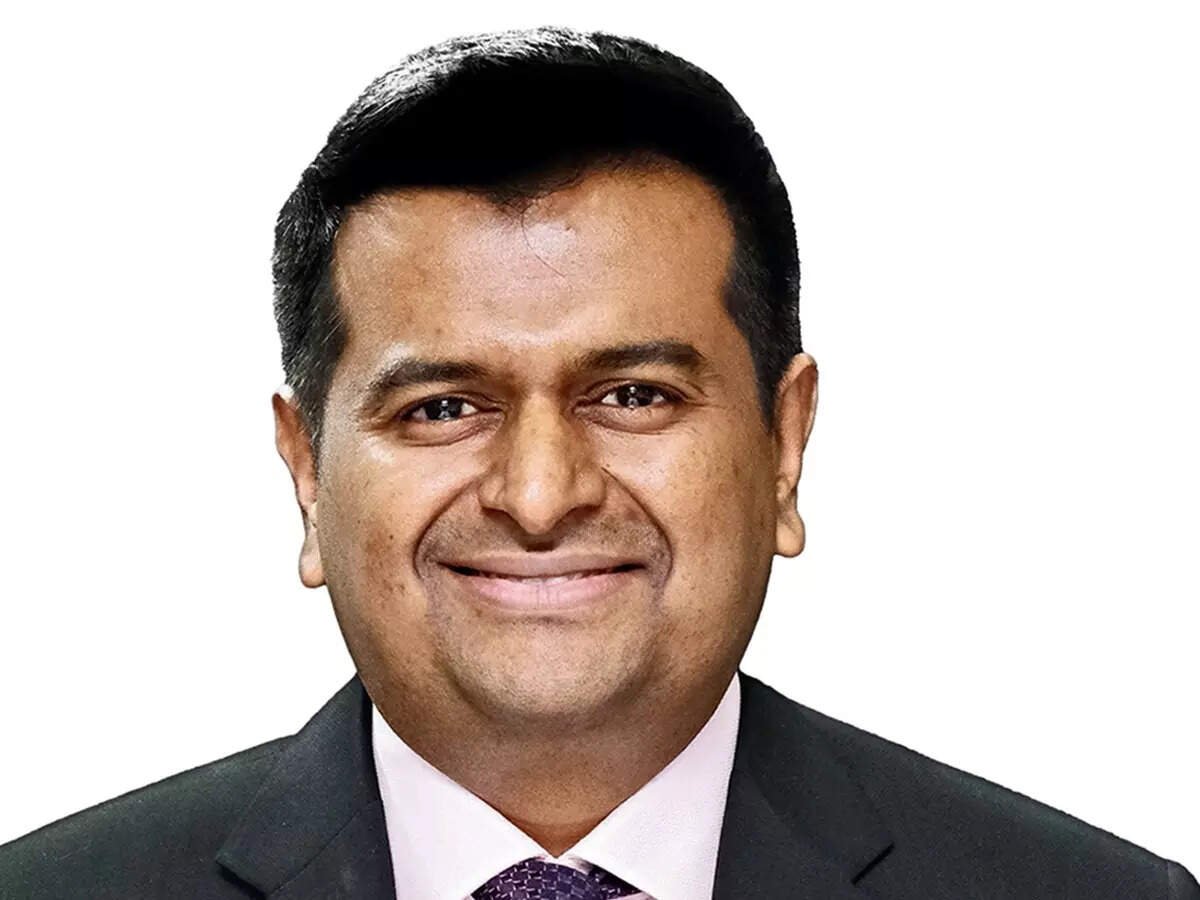What is your reading of the prevailing market situation?
The bigger picture narrative for India is of relative macro stability. We have come a long way from where India’s macros had regularly deteriorated, hurting investors. The cost of capital, in terms of the differential between India’s 10-year paper and that of the developed world, is the lowest in a couple of decades now. Our population demographics and consumption aspirations continue to be supportive.
It is in this context that the ongoing mini-cycle—signalling a slowdown in economic activity—must be viewed. This is also partly due to the stretched valuations. After Covid, earnings doubled in just three years; the next doubling may take 5-6 years. Even at current valuations, Indian equities continue to make strong investment sense.
When do you expect corporate earnings to rebound?
From the lows of December and March quarters, we will see acceleration in the coming quarters due to 2-3 broad reasons. First, we’ve seen support for consumption in the Budget. Many state governments have also started to move towards greater subsidies and social spending.
Second, the RBI is heavily pushing for growth, evident in its policy stance and measures. You can see the RBI’s shift from macro stability to growth. This should reflect in numbers with a lag of 6-12 months. Third, 50-55% of India Inc.’s top line comes from sectors that benefit from a weakening rupee.
A combination of these three factors is likely to show an improvement in the earnings trajectory.
Do you see significant risks if tariff wars are not resolved soon?
It goes without saying that the markets want lower tariffs, but it is the constant tinkering of policy that doesn’t go well with the long-term planning of businesses. Businesses hate uncertainty. It’s hard to guess what US President Donald Trump will do, but at the end of the day, he’s been a businessman for the last 30-40 years. He would understand the need for greater predictability. It is a self-defeating exercise to be in a constant state of flux.
Over the next 2-3 months, we expect bad data points coming through in the US. That will not be a surprise. The point is how businesses and common citizens react to it. The US 10-year paper or the Treasury market is a very important check. If the 10-year paper moves anywhere close to 5%, which is the US nominal GDP growth rate in a normalised environment, interest costs will rise faster than the nominal GDP. This is not desirable given the very high US debt-to-GDP ratio in the first place. So, yes, it is a risk that may alter the market trajectory for a few quarters, but is it something that will last, say, 5-6 years? We think not. Events like these are manmade resets. At the end of these resets, it’s not that businesses can go back to status quo. Neither is the case that the world will not know how to function. Both of these extremes are what most people seem to be focused on. The reality is that any manmade event creates a super trend. For example, in post-demonetisation India, we’ve seen a formalisation of the economy with breakneck speed. Something like this is going to happen even in the US. We’ll get to know only as time goes by. The market will try and discount this.
Which sectors or themes are you favouring now?
In the past six months, we’ve seen a reasonable dislocation in the markets. It’s our belief that the sectors that have done well in the past 3-5 years are unlikely to lead in the next 3-5 years. There is bound to be a sectoral churn. There are 9-10 sectors that have underperformed in the past 3-5 years. Some of the leaders in the next cycle are going to come from these sectors. These include private sector banks, metals, cement, FMCG, oil and gas, insurance, textiles, chemicals, and energy. These are the baskets with a greater margin of safety. We are not overweight in all of them, but we will identify the companies that are doing the right things, such as gaining market share in a down cycle.
Do you expect the markets to start favouring quality again?
Value does very well when there is a sustained acceleration and economic activity. While we may see some acceleration in economic activity, it is not that we’re likely to shift from, say, first gear to the third gear, which had been the case in the past 3-4 years. We are more likely going from, say, the third gear to the fourth gear. In that kind of environment, we think quality will do well. If you can find companies that can grow 20-30% higher than the rest of the cohort, you tend to get a premium. So my best bet would be growth and quality making a comeback.
Do you see the mid- and small-cap space as fragile now?
About 3-4 years back, mid caps and small caps predominantly led growth in the sectors that did well at the time. Earnings and margins are much smaller for these. So even a small acceleration in the economy tends to disproportionately benefit their earnings stream. Looking at the market-cap composition of the sectors that are likely to do well now, the bulk of the growth is captured in the large-cap space. Given this, and the entry point of valuations, it’s slightly better to be in larger companies at this point of time. This is not to suggest that small caps are bad per se. We think that the differential in returns over the next 3-4 years is unlikely to be very different, which had been the case in the past 3-5 years.
ABSL’s equity strategies have been laggards for quite some time. How are you setting things right and positioning your funds?
As a fund house managing close to Rs.2 lakh crore, we think of four broad skill sets that we bring to the table. Each of these have slightly different payoffs, mindset and culture. We have got the top-down sleeve of products, which is primarily funds where a lot of alpha creation comes on account of macro views on sectors and economy. These include our large-cap, flexi-cap, tax-saving and focused strategies. This is a space we’ve had a reasonably long-term track record, and where we are coming back strongly.
The second sleeve we offer is thematic funds, which typically have a much higher active share than the market-cap portfolio. We have been somewhat pioneers in this space, launching them well before they became mainstream, and they’ve continued to perform well across cycles.
The third space is our asset allocation suite of solutions, wherein the focus is both on experience as well as return generation. It is during times of dislocation that investors look up to these asset allocation products. This is an area of focus, where we have tweaked our quantitative models and come back stronger.
The area where we have not delivered to our full potential in the past is our bottom-up suite. This includes our mid-cap, small-cap, large- and-mid-cap, and multi-cap strategies. We have realised that it is very difficult for one person to be both an asset allocation specialist and a bottom-up specialist. So, over the past six months, we have brought in external talent with specific skill sets for these areas.
The second thing we have tried to set right is consistency. Like Howard Marks said recently, to build a great long-term track record, you need to be always good, sometimes great, and never terrible. In some years, you will have blow-out performance, but you should not be in a phase where you are at the bottom of the pack. You need to be in the vicinity of being always good. A lot of our processes are geared towards that. How do we get better at each of the fund activities? There’s a specific focus on selling of stocks because selling is where emotions can come through for any professional money manager. We have deployed significant quant frameworks to try and get better at selling and redeploy capital efficiently. So, while buying decisions happen with a lot of human involvement, we have tried to use quant frameworks to help nudge us in terms of selling and redeploying right.
The third area of specific focus is building bigger and bolder bets, wherein we take far more concentrated positions in some of the holdings.
Are you saying quant will help you deliver more consistent outcomes for investors?
We are putting in a lot of effort to build a foundation of rule-based investing. Stock selection has been the key focal area for money managers over the past few years. We think that repeatability is going to be the other key dimension. Repeatability doesn’t mean consistency. In a non-linear asset class like equities, you can’t get consistent returns at every point of time.
However, can we create an environment and ecosystem where we are more repeatable in terms of outcomes? That can happen only when there is a focus on process or rule-based investing, so that it brings in rigour and discipline. This is not taking away the nurturing of human creativity and imagination. As Ashwath Damodaran says, investing is not just about numbers. It is about numbers and narratives. So there is a quant element to it as well as a creativity element. The idea is that you need to nurture both, so that you retain the potential to identify multi-baggers, but in a disciplined, rule-based manner.
RAPID FIRE
Q. What’s an investment tip you’d give your younger self?
There are many ways to invest. Explore multiple options early in your career and learn from your mistakes. The maximum learning comes from one’s mistakes and ensuring one doesn’t repeat them.
Q. What’s the biggest lesson the market has taught you?
The gap between great investors and others is not so much about their buying framework, but their selling/holding framework. Selling is a very emotional decision and is prone to a lot more errors than buying.
Q. If you were to meet Warren Buffett, what would you ask him?
Two questions: When in your investment career did you have the most self-doubt about your investment capabilities and how did you overcome it? What’s your framework for evaluating investment decisions and deciding when to exit a position?
Q. If you could alter your career choice, what would it be?
I would be a teacher, trying to ignite curiosity in my students.
Q. What is your personal asset allocation right now?

Q. Any good book you would recommend?
The Economic Organisation of POW Camp by R.A. Radford (not a book, a 14-page pdf); The Art of Execution by Lee Freeman-Shor




